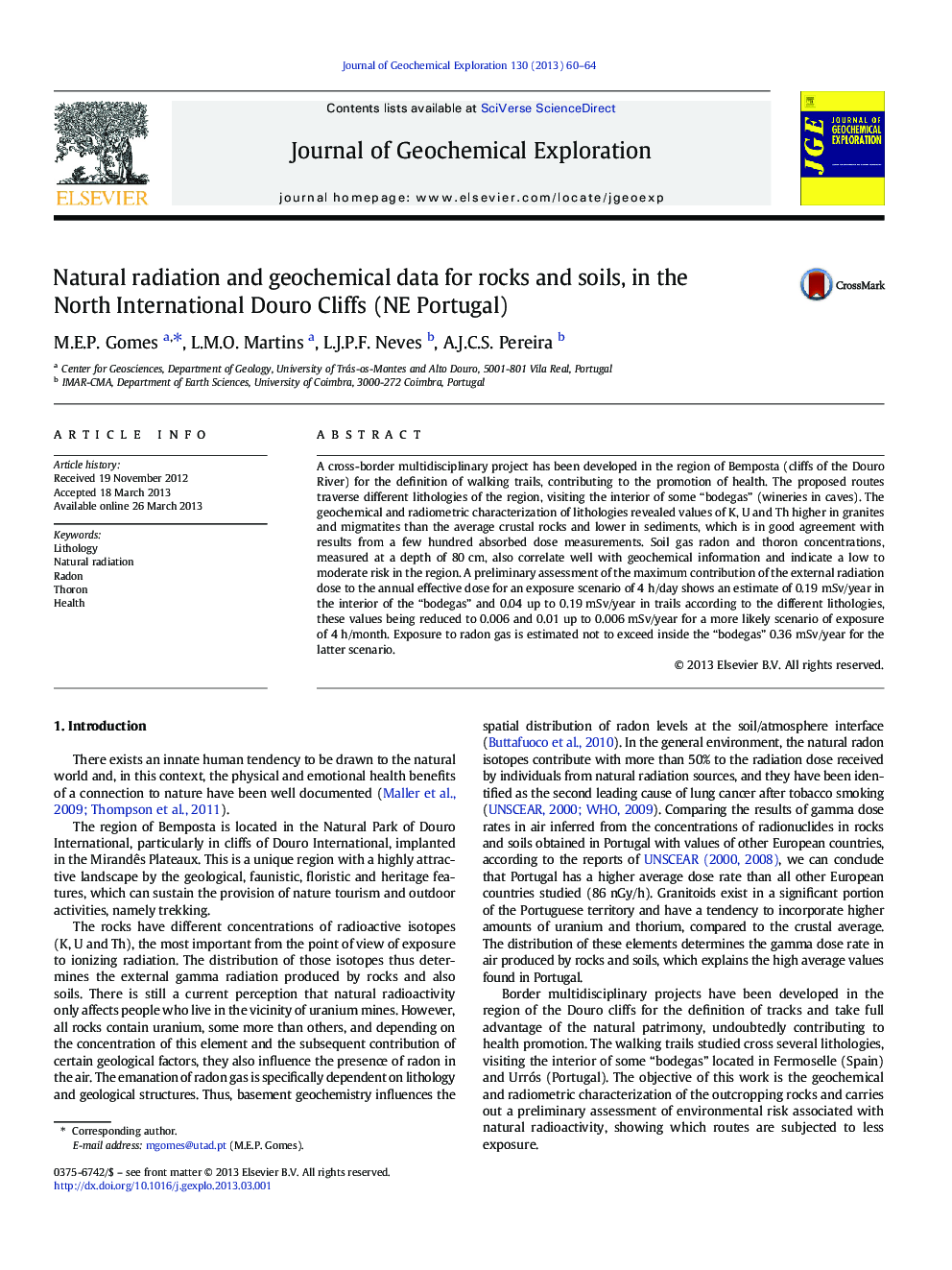| Article ID | Journal | Published Year | Pages | File Type |
|---|---|---|---|---|
| 4457550 | Journal of Geochemical Exploration | 2013 | 5 Pages |
•Walking trails in the Douro cliffs contributing to the promotion of health•Granites generally have higher natural radioactivity than other lithologies.•The pedestrian paths that cross sediments have naturally lower radiation dose.•The effective dose from ionizing radiation exposition in the caves are significative.
A cross-border multidisciplinary project has been developed in the region of Bemposta (cliffs of the Douro River) for the definition of walking trails, contributing to the promotion of health. The proposed routes traverse different lithologies of the region, visiting the interior of some “bodegas” (wineries in caves). The geochemical and radiometric characterization of lithologies revealed values of K, U and Th higher in granites and migmatites than the average crustal rocks and lower in sediments, which is in good agreement with results from a few hundred absorbed dose measurements. Soil gas radon and thoron concentrations, measured at a depth of 80 cm, also correlate well with geochemical information and indicate a low to moderate risk in the region. A preliminary assessment of the maximum contribution of the external radiation dose to the annual effective dose for an exposure scenario of 4 h/day shows an estimate of 0.19 mSv/year in the interior of the “bodegas” and 0.04 up to 0.19 mSv/year in trails according to the different lithologies, these values being reduced to 0.006 and 0.01 up to 0.006 mSv/year for a more likely scenario of exposure of 4 h/month. Exposure to radon gas is estimated not to exceed inside the “bodegas” 0.36 mSv/year for the latter scenario.
